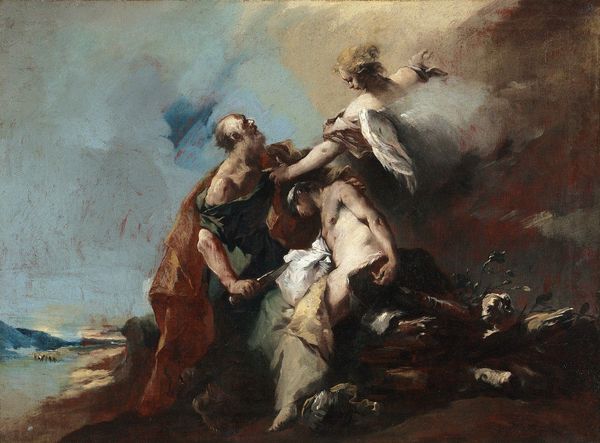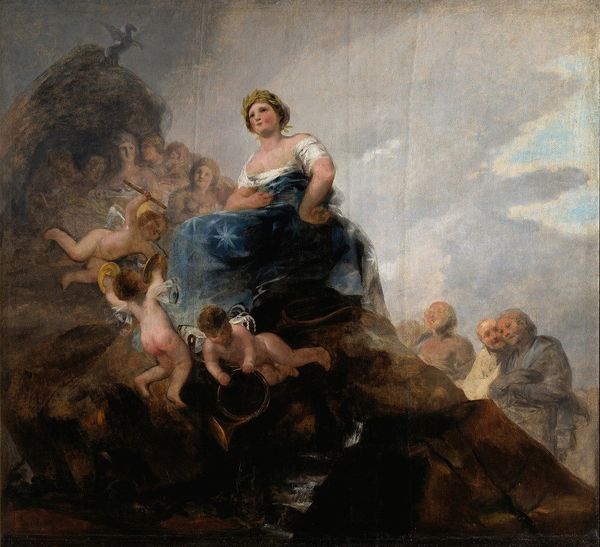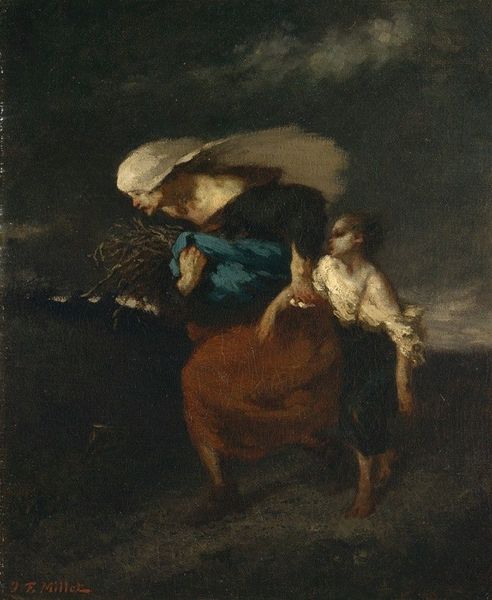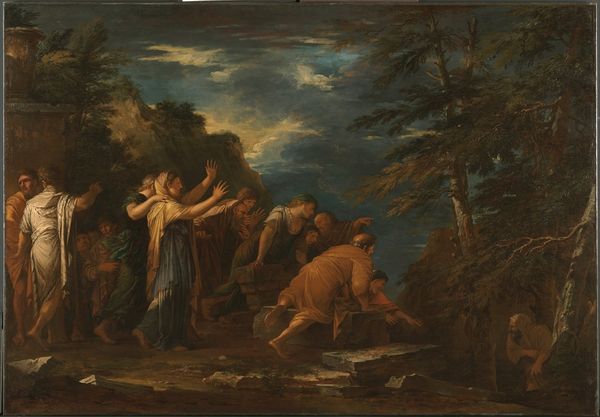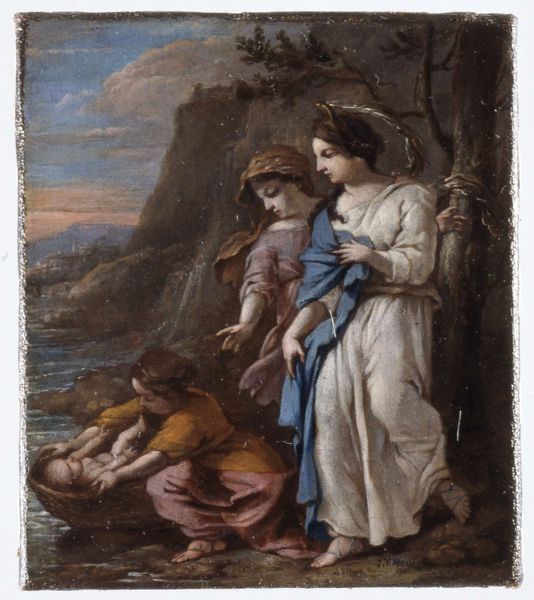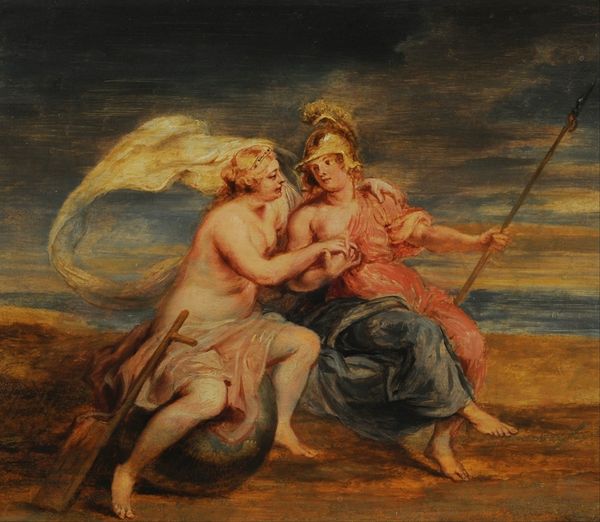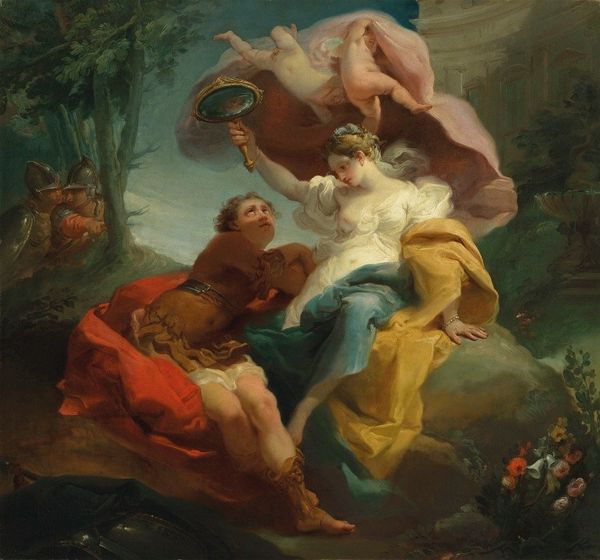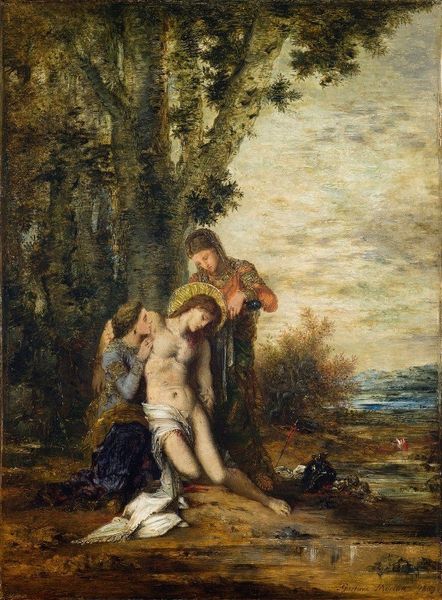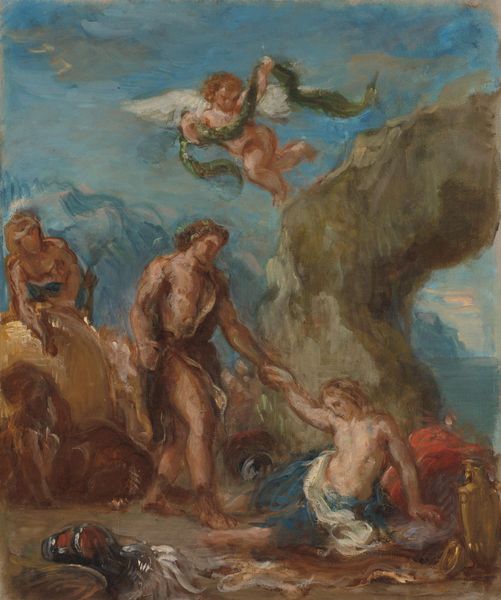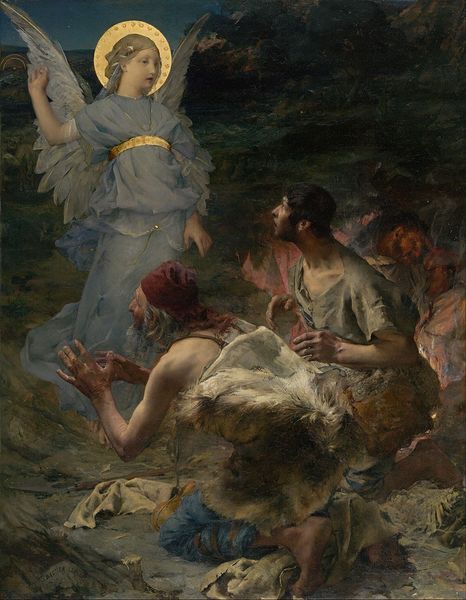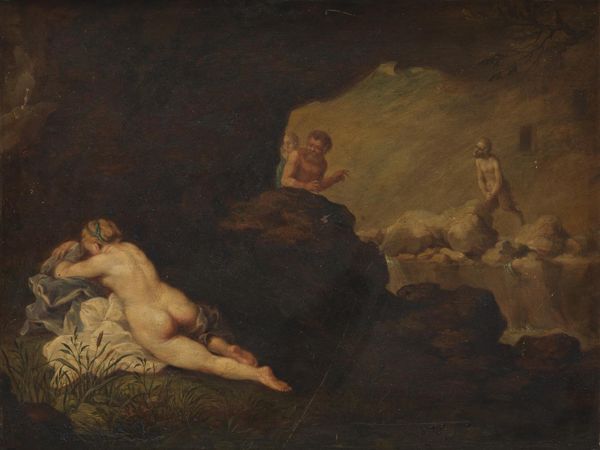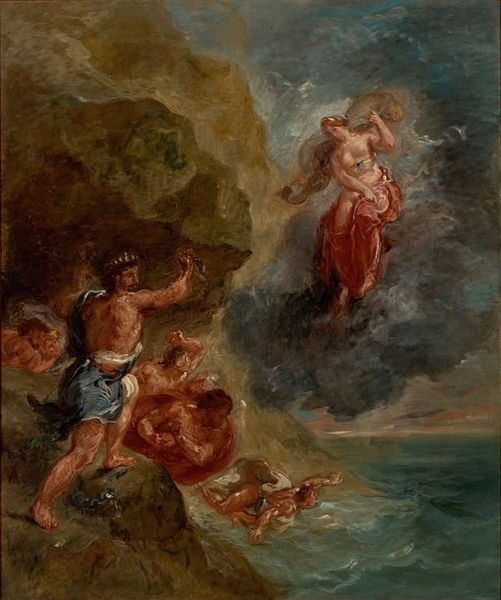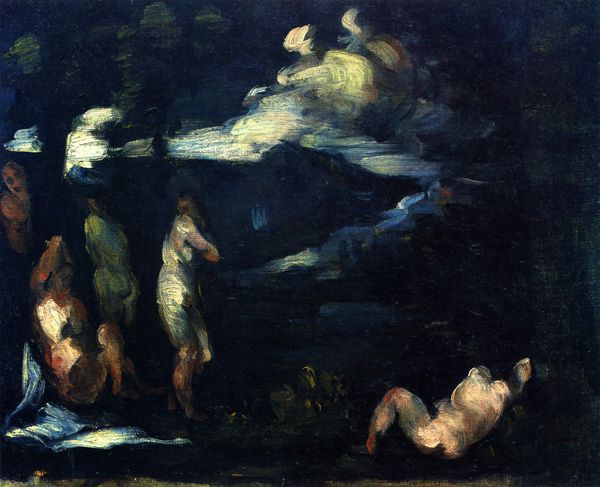
Copyright: Public Domain: Artvee
Curator: Immediately, the shadowy drama and muted colors create such a distinct atmosphere, a tension that makes me wonder about what is about to happen, or has already passed. Editor: Let's consider Francesco Guardi’s “Tobias and the Angel,” created around the 1750s with oil paint, a baroque piece showcasing a narrative moment ripe with both religious and social symbolism, framed in landscape. Curator: Narrative it is! A powerful interplay between vulnerability and divinity seems evident in the body language of the figures, especially when examined from the standpoint of power dynamics inherent to the biblical story. It invites consideration on how visual narratives reflect established religious and social hierarchies. Editor: Absolutely. Remember that the artwork’s location shapes meaning. Guardi was working in Venice, within a society governed by strict patriarchal systems where representations of virtue and faith were employed both to indoctrinate and to sustain civic morality, impacting interpretations of power during the late Baroque period. Curator: Agreed, and the composition itself serves this. There's a directional tension, you see it, that forces my eyes to go towards Tobias in the lower left. It positions the youth at a symbolic disadvantage beneath the dominant, guiding angel on the right. But this "divine intervention" perhaps can be analyzed from different critical perspectives, let's say gender studies or critical race studies in which historical portrayals were sometimes deployed to support specific socio-political arguments? Editor: These nuanced interpretations open the painting to broader discourses beyond art history. This discussion around the religious morality and artistic intent certainly adds more meaning. I appreciate how our conversation enhances accessibility and invites many to come away feeling as if they've deeply understood. Curator: Me too.
Comments
No comments
Be the first to comment and join the conversation on the ultimate creative platform.
